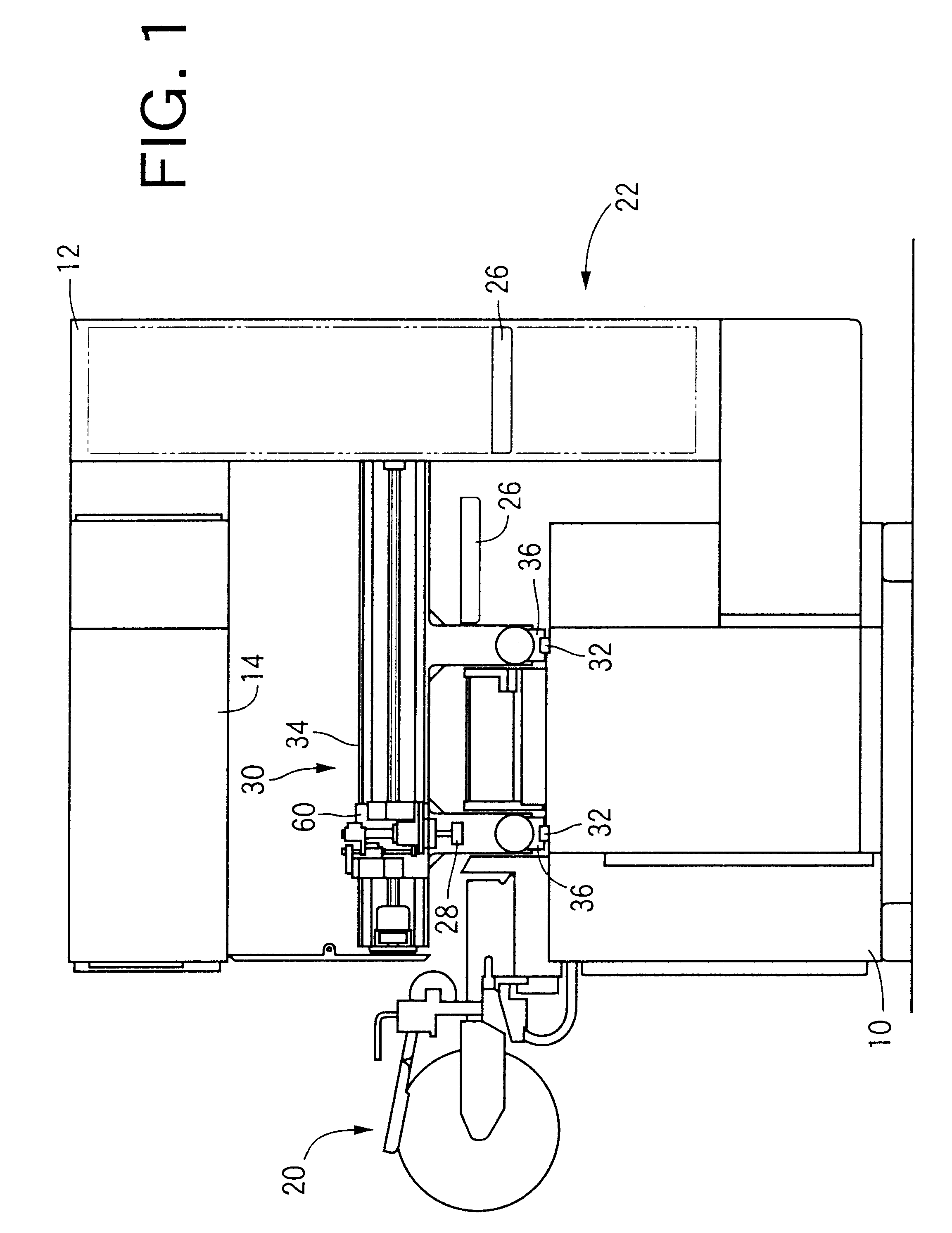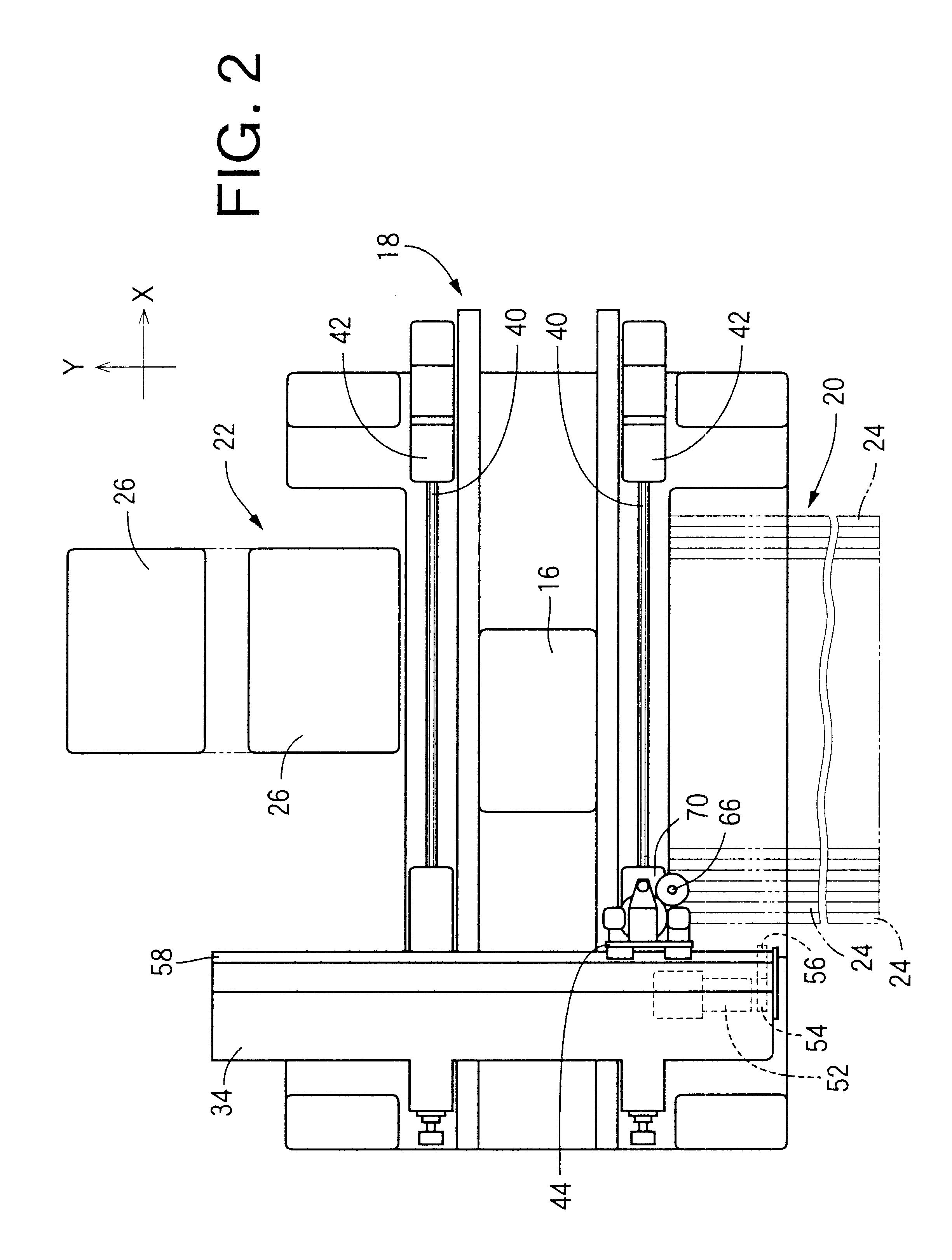Image processing method, image processing system, and modifying-data producing method
a processing method and image technology, applied in the field of processing image data, can solve the problems of reducing the resolution of the taken image, difficult to recognize accurately one or more fine parts of the ec, and the cost of the line-sensor camera itself, so as to achieve the effect of reducing the total amount of modifying data
- Summary
- Abstract
- Description
- Claims
- Application Information
AI Technical Summary
Benefits of technology
Problems solved by technology
Method used
Image
Examples
Embodiment Construction
An electric-component (EC) mounting system to which the present invention is applied is shown in FIGS. 1 and 2. The present EC mounting system has the same basic construction as that of the system disclosed in Japanese Patent No. 2,824,378. First, a general construction of the EC mounting system is briefly described and then, only relevant portions of the same are described in detail.
In FIG. 1, reference numeral 10 designates a base, on which a plurality of columns 12 stand. A stationary frame 14 is fixed to the columns 12, and supports an operation panel, etc. As shown in FIG. 2, on the bed 10, there is also provided a board conveyor 18 which conveys a printed board 16 as a circuit substrate in an X-axis direction as shown in FIG. 2. The term "printed board" is used to refer both a printed "wiring" board on which no ECs have been mounted, and a printed "circuit" board on which ECs have been mounted. The printed board 16 which is conveyed by the board conveyor 18 is positioned and s...
PUM
 Login to View More
Login to View More Abstract
Description
Claims
Application Information
 Login to View More
Login to View More - R&D
- Intellectual Property
- Life Sciences
- Materials
- Tech Scout
- Unparalleled Data Quality
- Higher Quality Content
- 60% Fewer Hallucinations
Browse by: Latest US Patents, China's latest patents, Technical Efficacy Thesaurus, Application Domain, Technology Topic, Popular Technical Reports.
© 2025 PatSnap. All rights reserved.Legal|Privacy policy|Modern Slavery Act Transparency Statement|Sitemap|About US| Contact US: help@patsnap.com



